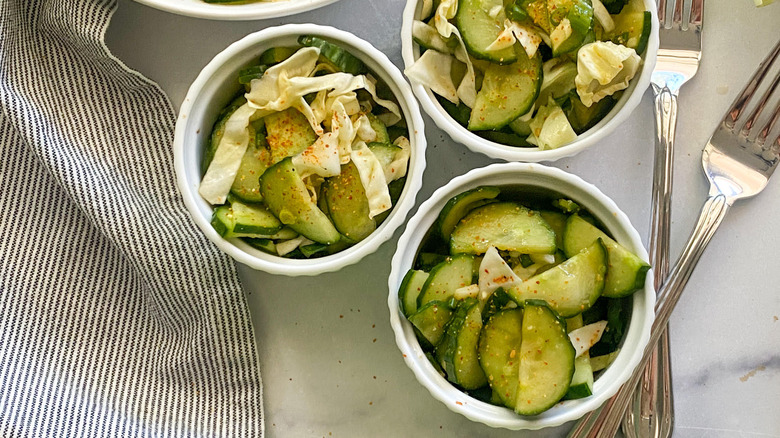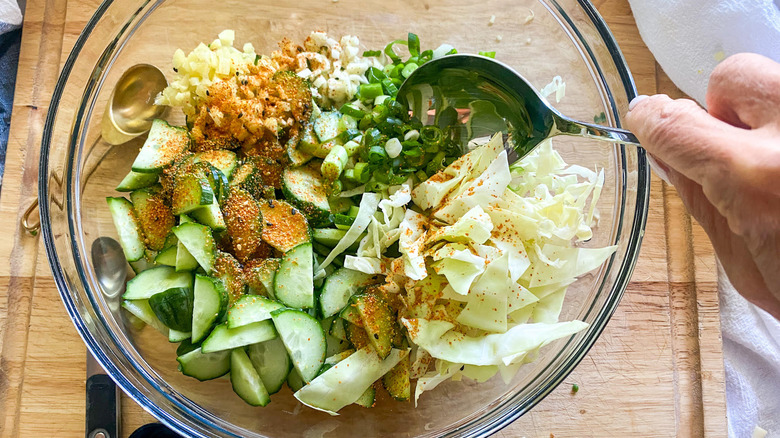The Veggie Duo You Need For A Korean-Inspired Summer Salad
Sometimes, all you need is a bowl of summer salad to refresh the palate and chase away that sweltering heat. After all, what's better than digging into fresh produce infused with gorgeous flavors? Temporarily stepping away from the usual colorful fruits and grilled greens, cucumber and cabbage is the Korean-inspired combination you may find yourself munching on all summer. Although seemingly simple, as we've come to discover with our cucumber kimchi salad recipe, these veggies are actually a match made in salad heaven.
In Korean cuisine, cucumber salad is a mealtime staple for many. You can easily find it alongside hearty, rich main courses, offering its very own fresh taste and spicy kick. When cabbage joins the party, its crisp, clean flavor makes it a perfect match, building right into the overall freshness. According to recipe developer Miriam Hahn, when marinated overnight with robust seasonings, these veggies are the perfect shortcut to achieving that coveted kimchi taste without the long waiting period. The spices and condiments are, of course, staples in many Asian dishes. What you get in the end is an exquisite balance of light and vibrant flavor notes, coming together in every crunchy bite.
Simple yet flavorful, this Korean-inspired salad is a great side dish. Needless to say, Korean main courses like bibimbap, jjajangmyeon (black bean sauce noodles), japchae, and bulgogi are all ideal companions. Beyond that, feel free to serve it cold in your daily summer meals or outdoor grills with savory, hearty proteins.
Ways to customize this veggie duo
Korean salads often use Korean cucumbers, which are thinner and longer than the varieties we normally see. That said, it's fine to use English or Persian cucumbers. As for the cabbage, white Napa cabbage is an easy, popular choice, but those who like a stronger taste can also opt for red or purple cabbage.
Cucumber and cabbage alone are a decent salad base, but as always, it's more fun if you include a few other ingredients. Nothing elaborate, just some carrots or onion will do. An aromatic touch from garlic, ginger, cilantro, or scallions is never redundant, either. For those who like a more substantial crunch, edamame or roasted peanuts are the ideal addition. And don't forget about toasted sesame seeds; they're a general must-have in Korean salads.
As for the dressings, let's start with Asian staples that you may already have. Fish sauce, soy sauce, rice vinegar, and sesame oil can all be used in moderation to create an umami, savory base. Then, depending on your personal preference, your choices may vary. Go for gochujang if you'd like a spicy, tangy taste, chili oil for a true spark of heat, or miso for a deeper, more salty-sweet approach. Add salt and pepper to taste, sugar, and perhaps even gochugaru (Korean chili flakes), garlic powder, or crushed red pepper. For some, lime juice is also a must because it imparts a zesty, sour undertone that uplifts the entire flavor profile.

